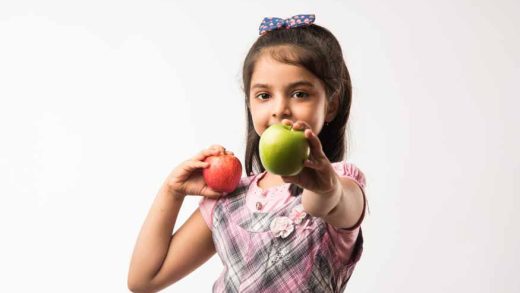Self-feeding is an essential phase of toddler development. It is a basic life skill to be taught to children during their infancy. This will help the toddler develop effective eye and hand coordination and develop motor skills. Over time, as the toddler starts feeding themselves, they can even make choices over their food. A child develops the ability to think critically.
Parents must be aware of the various tactics used to train babies to eat independently. Teaching toddlers to self-feed could be a task as toddlers struggle to differentiate between different food types. The development of taste and likeness towards a specific kind of food develops over time.
Stages of Self-feeding
Parents should know that toddlers may not learn how to self-feed right from day one. It takes a lot of patience for parents to finally make a toddler understand how to pick food with a hand or spoon. It is important to know the various stages of self-feeding, aiding to develop strategies that make it easier to understand how to train toddlers to self-feed.
Below are the stages of self-feeding for a toddler as they are introduced to this activity of self-feeding:
- Use of fingers: Parents should give toddlers bigger or more colourful food that generates curiosity in the child. Toddlers begin by using their fingers to test the food and will try to pick it up. They may not be able to pick the food in the initial attempts, but parents should encourage them to continue.
- Use of self-utensils: Self-feeding utensils are available to teach how to train babies to self-feed. Your toddler may have just learned to start eating using their fingers; self-feeding bottles could now be easier to use as they learn to pick up and drink by themselves. Parents should continuously encourage them to pick the food or the self-feeding utensil to initiate the self-feeding process.
- Food play: Messy eating and playing with food is normal for toddlers. They learn to pick the food either with their hands or spoon based on their choices. A spill of food could be evident. However, it is essential to assess the progress of eye and hand coordination over time.
Effective Ways to Train Toddlers to Self-feed
There is no perfect way or strategy for parents to teach their babies to self-feed themselves. It depends on the child’s developmental pattern to evaluate the various valuable tactics to help the toddler with self-feeding. Self-feeding should begin around the age of 15 to 18 months. The self-feeding process is progressive for a child.
Below are some of the most effective ways to help you train your child to self-feed themselves:
- Use of self-feeding utensils: Colourful and bright self-feeding utensils like forks, spoons, and feeding bottles are proper utensils to encourage toddlers to self-feed themselves. Such tools are usually soft with a wide grip handle that could help the toddler quickly hold them to pick food.
- Demonstration: A toddler may often copy their parent’s actions, and hence, parents should take the opportunity to enact an eating scene or demonstrate how to use fingers, for instance, to self-feed. As they see their parents self-feed, toddlers also learn by seeing. Repeating the self-feeding actions again and again helps the toddler build a memory of the action. They begin to execute when food is given to them.
- Tackling refusal to eat: Babies could be stubborn when expected to self-feed. Tackling tantrums and encouraging them to self-feed could be achieved using more vibrant feeding tools or regular demonstrations. Feeding them as per their taste and preferences would eventually be more important to motivate them to self-feed.
- Food choice: Babies eventually develop the natural habit of differentiating different types of food based on colour and taste. While they may self-feed certain kinds of meals, they may reject or refuse to eat certain types of food. If the toddler does not like certain foods, it is recommended that parents use attractive self-feeding utensils and create a demonstration to show that those foods are delicious to eat. A cartoon encouraging babies to eat a particular fruit could help deal with the refusal concept based on their food choices.
- Analysis of developmental milestones: To teach toddlers about self-feeding, assessing the developmental milestones of feeding skills is essential. The sucking, swallowing, time per spoon fed by self, tongue movement, and biting of food, are some of the activities of self-feeding that parents must observe. This will help you to correct their actions and show the right way of self-feeding, assisting them to understand the process better.
Supporting a child to self-feed is essential in child development. There is no perfect strategy that a parent could execute, and babies need to be excited about food. This can be done through role plays as well, which would allow them to enact self-feeding as they copy their parents. It becomes vital for parents to assess their ways of teaching a child to self-feed. This is achievable by analysing the progress of their feeding skills.
At Kangaroo Kids International Preschool, we teach children to self-feed, knowing it is an important life skill. Contact us today to support your child in their journey of self-feeding.








